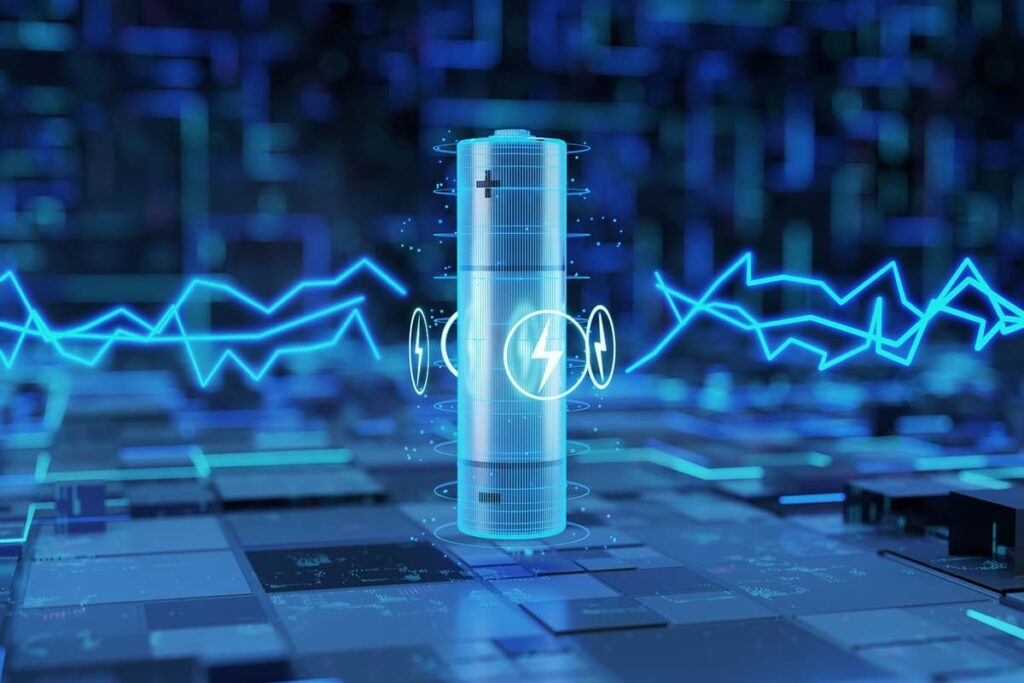Mining Technologies For the Mines of the Future
Table of contents

They say that if aliens ever stop by long enough to express a real interest in what we’re getting up to, they might find a few things to be puzzling. For example, why do we spend billions of dollars finding gold, digging it up, then putting it all in a heavily guarded place to make sure nobody can access it? It’s a good question. Gold is just one of many commodities that we dig out of the ground for any reason that results in a profit being made. According to a report by PWC, the top-40 mining companies in the world account for almost 50% of global production for key commodities such as iron ore, copper, manganese, cobalt, and platinum group metals. Combined market cap for all 40 of these companies sits at around $926 billion – about the same size as Amazon.
In a recent article, we looked at how How Rio Tinto Uses Technology For Ethical Mining in an attempt to appeal to the tattooed Millennial who majored in gender studies and now works as a Starbucks barista while complaining about how evil capitalism is and demanding that their 401K investments reflect their “values.” While the merits of ESG investing can be debated, mining is one industry where technology can do a lot to minimize the damage we inflict on the planet – and her people – while conducting the dangerous activities that entail mining. We traveled to one of the biggest silver mining operations in the United States – Lucky Friday Mine – to learn more about mining technologies.

We quickly learned that mining companies don’t care for people coming around asking questions, and that the mountain biking trails in the Silver Valley are dope. We also learned that mining can be divided into two broad categories – surface mining and underground mining.
Autonomous Mining Trucks
Surface mining is when contact with the Earth’s surface is always maintained during the operation. We recently wrote about a company called RS Metrics that uses satellite images of surface mining activities to predict the prices of metals. If you were to observe these pictures over time, you would see lots of large dump trucks going to location A to load materials and location B to offload materials. These mundane activities should be very easy to automate, and a Japanese industrial equipment maker, Komatsu (6301:JP), has been doing this for over ten years. An excellent article by Equipment World talks about how Komatsu’s Autonomous Haulage System (AHS) is a fleet of self-driving mining trucks with capacities between 200 and 400 tons which operate at mines in three locations around the globe in four mining applications: oil sands, copper, iron, and coal.

“The system manages 130 mining trucks globally for three different customers: Suncor Energy, Codelco and RioTinto,” says the article which states that Komatsu worked on AHS for 26 years until they finally deployed the first instance in 2016. The system allows manned and autonomous drivers to operate simultaneously, something that’s made possible by some sophisticated mine management software.
A Fleet Management System
Tim Cook of Apple recently talked about how he acquires a company about every several weeks, something that gets largely overlooked. It’s not uncommon for large companies to regularly acquire additional technologies, and Komatsu is no exception. In 2003, a company called Modular Mining was fully acquired by Komatsu which is coincidentally the same year they began developing AHS.
There’s an acronym software developers use – GIGO – which stands for Garbage In, Garbage Out. In order to automate mining equipment, you first need to make sure you’ve optimized the manual process first. That’s what Modular did with their DISPATCH Fleet Management System which helps mining operations become more efficient. In one example, a Russian mining company was able to improve communications between the crushers and the dump trucks such that idle time decreased by 80%.

That’s just one example of how the movement of trucks within a mine and the interactions between various types of mining equipment can be optimized, something that’s an important prerequisite to mining autonomy. Reducing idle time reduces fuel consumption, but what about reducing it even further? Some bright minds over at Queensland University published a paper on how we might use artificial intelligence to reduce fuel consumption in mining trucks, which isn’t a bad idea. Then a Slovakian company decides to best that by developing fully electric haul trucks that claim the lowest cost-per-ton in the industry.
Electric Mining Trucks


The latest update on the company page is that they’re taking orders and one can expect nine months before delivery. Hopefully, they’re selling units and gaining market share because they’re not alone. Larger equipment manufacturers like Caterpillar (CAT) are also looking at how electric batteries might be used to power mining equipment while others are looking at how to retrofit existing equipment.
In order to dislodge all that rock so that it can be loaded in dump trucks, many surface mining operations use a technique called “drill and blast” which is exactly what it says on that tin.
Automated Quarry Drilling Machines
Drilling a series of holes in a rock face using a giant drilling machine doesn’t sound like something that should need a human operator, but it’s a process that’s far more complicated than it sounds. It’s also relatively dangerous, since it involves placing a bunch of explosives inside the holes after they’re drilled. A Swedish company called Epiroc (EPIA:SS) was recently spun out of an even larger Swedish company – Atlas Copco (ATCOA:SS) – and is working to transform drilling with their automated drilling solutions.

The SmartROC D65 seen above is highly automated and drill holes on its own. The rigs are highly consistent and consequently consumables wear out at a lower rate. The extra precision in drilling yields optimal blast results and increases safety. The BenchREMOTE option allows one person to control up to three rigs simultaneously from 100 yards away which dramatically increases operator productivity.
Underground Mining Machines
All the equipment we’ve been talking about so far is used for surface mining, but there’s a completely different type of mining that takes place deep within the earth called “underground mining.” Underground miners also use a “drill and blast” approach which is about as dangerous as it sounds. Epiroc is working to transform underground mining with their Mobile Miner family of awesome drilling machines.

The above machine is inspired by the same technology that’s used to drill subway tunnels for underground transportation. This new “continuous mining and tunneling method” is highly automated with the above machine able to tunnel about 10 to 15 yards a day. It’s also safer because – no explosions. The first order of Mobile Miner 40V was said to be delivered to the Lucky Friday mine in Idaho’s Silver Valley which is owned and operated by Hecla Mining Company (HL). (Our calls to Hecla went unanswered, and stopping by the Lucky Friday mine unannounced was met with a great deal of suspicion.) The next step, of course, is to make these machines electric. Epiroc’s also working on that too.
Electric Underground Mining Equipment
Ventilation is a very important part of mining safety. “Ventilation contributes to about 30 to 40% of the total energy operating costs in underground mines,” says an article by Mining.com which goes on to say that “moving from diesel to electric-drive machinery can reduce a mine’s ventilation requirements by anywhere from 35 to 50%.” In other words, adopting electric machinery can potentially reduce energy costs for a mine by anywhere from 10.5% to 20%. That’s an easy sell in a boardroom.
“Epiroc and Kirkland Lake Gold leading the mine electrification race,” says an article by International Mining which goes on to say that Epiroc began developing electrical mining equipment back in 2012. Epiroc is now launching their second generation of electrical mining equipment following feedback received from 65,000 hours of operation by first-generation equipment.

The machines on offer include “second generation electric battery 14 and 18-tonne loaders, our 42-tonne truck and our mid-sized drilling family including face drilling, production drilling and rock reinforcement rigs.” That’s according to an article by CleanTechnica which also says that Epiroc “would be electrifying its entire lineup in the next 5 years.”
More Mining Technologies
We’ve barely touched on all the innovation that’s happening out there, but we’re running out of time folks. We’ve talked about some technologies used for ore extraction, but there also many technologies addressing later-stage steps in the mining process like sorting, or earlier stages like planning and exploration. We largely avoided these topics because we’re a bunch of children at heart and prefer talking about big cool-looking machines as opposed to some conveyor belt that sorts rocks using sensors or x-ray diffraction technology that’s used to identify deposits. If this article proves to be popular, maybe we’ll dig in and look at some of the other mining technologies being developed. (If you’re a company out there doing something really disruptive in the mining space, do drop us a note in the comments section below.)
Conclusion
It’s easy to imagine a future where a small number of humans command an entire global mining operation. For example, Komatsu’s AHS technology enables a single operator to command thirty trucks at a time. Mining companies are facing increased pressure from their investors to go green, and there’s a cost associated with that. As investors, we buy shares in a company because we want a return on our investment so we can use our newly created wealth to help change things for the better. What those tattooed Starbucks baristas don’t realize is that you need to beat the system first before you can change it. These mining technologies reduce workplace accidents, use fewer resources to accomplish the same thing, and give mining companies the ability to fulfill their fiduciary responsibilities to investors while saving the planet as well. Everyone wins.
Sign up to our newsletter to get more of our great research delivered straight to your inbox!
Nanalyze Weekly includes useful insights written by our team of underpaid MBAs, research on new disruptive technology stocks flying under the radar, and summaries of our recent research. Always 100% free.















I see an eventual gold mine in mining landfills. If the “separator” type of machine I envision is not being built, someone needs to.